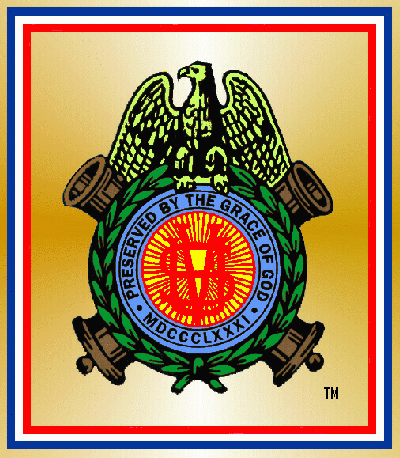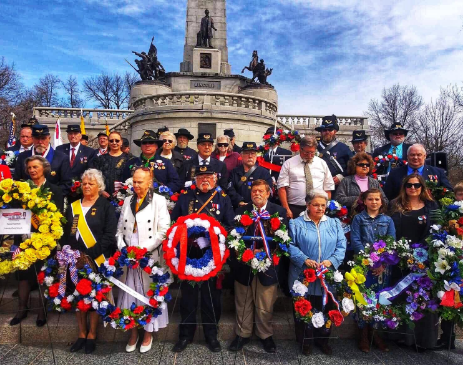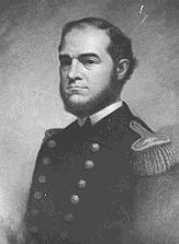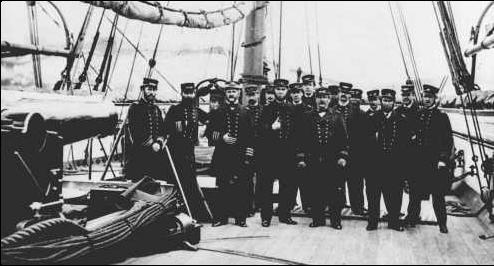James S Thornton
Sons of Union Veterans of the Civil War


James S. Thornton James S. Thornton was born in Thornton's Ferry (Merrimack), New Hampshire on February 25, 1827. He was the great-grandson of Matthew Thornton, signer of the Declaration of Independence. His father James B. Thornton died in 1838, while ambassador to Peru. His upbringing was taken over by future U.S. President Franklin Pierce and Senator Atherton.
On January 15, 1841, at the age of 14, Senator Atherton appointed James a midshipman in the United State Navy. He served on the frigate Columbia and John Adams, a sloop converted to a man-of-war. In 1846, he was sent to the Naval Academy and in 1847 to sea during the war with Mexico. In 1850, James Thornton was engaged in coast survey work in the Pacific and, after a dispute with his superior, resigned from the Navy. He spent the next three years surveying the gold fields of California and in what is now Utah.
In February 1854, he was restored to his naval rank and went to sea aboard the store-ship Relief serving in the waters around South America. While on this duty he was wounded fighting a duel. In 1857, he returned to Merrimack and married his cousin, Ellen Thornton Wood. The couple would have no children.
At the outbreak of the Civil War, Thornton, who was serving on the brig Bainbridge, was transferred to Admiral David Farragut's flagship Hartford as executive officer. He was aboard the Hartford during the capture of New Orleans and served on this ship in subsequent campaigns on the Mississippi River, including Vicksburg. . It was while aboard the Hartford that he devised the scheme to cover the sides of the ship with chains to repel cannon balls. He received high praise from Farragut for the idea.
In August 1862, Thornton became commander of gunboat Winona which was stationed off Mobile, Alabama. In December 1862, he was assigned as executive officer the Kearsarge at the start of her cruise in search of the Confederate raider. The battle between the Kearsarge and the Alabama is one of the famous naval battles in American history. The engagement took place in June, 1864 off the coast of France. The commanding officer of the Kearsarge, Captain John Winslow, in a report to Gideon Wells, the Secretary of War, singled out Thornton's performance:
It would seem almost invidious to particularize the conduct of any one man or officer in which all had done their duty with a fortitude and coolness which can not be too highly praised, but I feel it due to my executive officer, Lieutenant. Commander Thornton, who superintended the working of the battery, to particularly mention him for an example of coolness and encouragement of the men while fighting, which contributed much toward the success of the action.
Many of the crew also credited Thornton with playing a major role in the battle. The sinking of the Alabama was a major defeat for the Confederate States and a major victory for the United States. Thornton's naval career was undoubtedly helped by his participation in the fight. For distinguished service in action, James Thornton received a Congressional vote of thanks and was advanced over others in his grade and given command of the Kearsarge.
After the war, he was stationed at the Portsmouth Navy Yard from 1865 to 1873 where he was promoted to the rank of Captain in 1872. In 1873, Captain Thornton was given command of the USS Monongahela for a scientific expedition to Kerguelen's Land. The voyage was undertaken with only the original charts made by Captain Cook. His mission was a success but on the return voyage he was thrown down by a sudden lurch of the ship and received a serious injury to his spine. At Cape Town, South Africa, he was sent home by way of England. After being transported to Philadelphia, Captain Thornton died at Germantown, Pennsylvania on May 14, 1875, at the age of 48. His body was returned to Merrimack and he was buried in Last Rest Cemetery. The US Navy recognized his distinguished service by naming the torpedo boat, The Thornton, in his honor. The Grand Army of the Republic Post in Merrimack, New Hampshire was named for Captain Thornton.
Photographs and information submitted by Steve McKay, Merrimack, New Hampshire Historical Society.
James S. Thornton
Officers Aboard the USS Kearsarge (June 1864)








